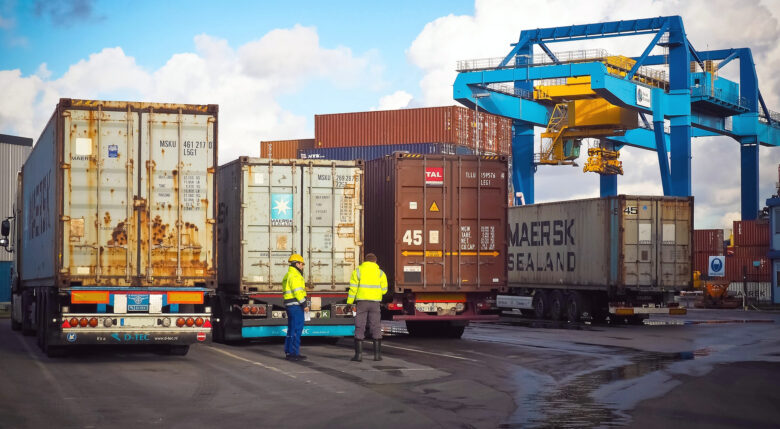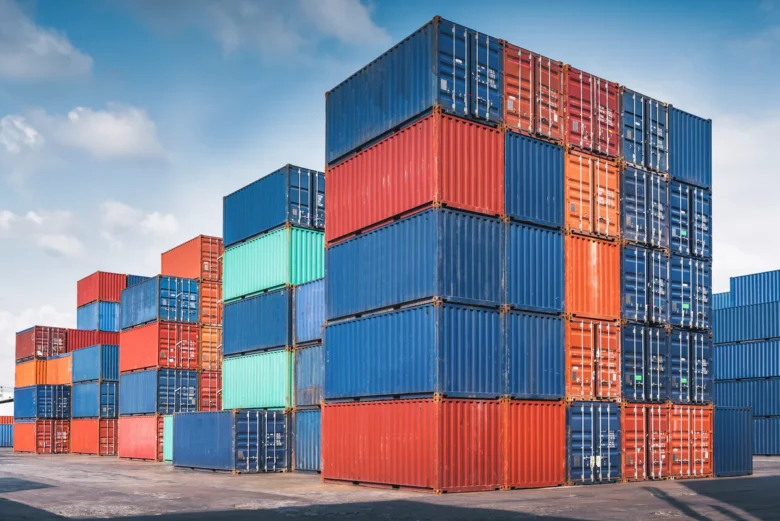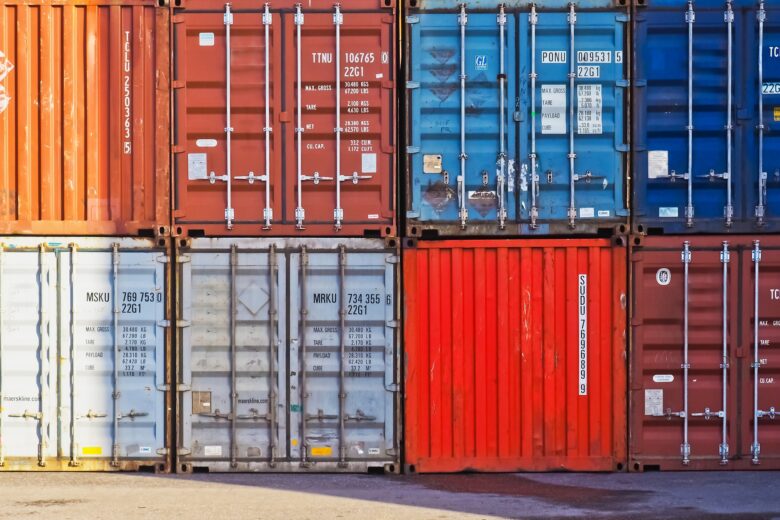Efficiency is the name of the game when it comes to container transport delivery through roadways. In a world where speed and reliability are paramount, the logistics industry has continually evolved to meet the demands of global trade.
This comprehensive exploration delves into the intricate web of moving shipping containers on roads, uncovering the mechanisms that drive this crucial aspect of modern commerce.
1. The Backbone of Global Trade:

In global trade, road transport emerges as the unsung hero. Serving as the vital backbone, it seamlessly connects ports, warehouses, and industries, ensuring a smooth flow of containers from origin to destination. The adaptability and accessibility of road networks make them indispensable in the grand scheme of container transport. As the arteries of commerce, they not only facilitate the physical movement of goods but also foster economic growth by providing a flexible and reliable conduit for the exchange of goods on a global scale. Moreover, it is crucial to deliver products directly to consumers’ doorsteps. The ultimate segment of the supply chain hinges on the effectiveness of terrestrial networks to fulfil the requirements of e-commerce and meet consumer expectations for swift and dependable deliveries. Beyond its logistical significance, it contributes to job creation and regional development, and well-maintained highways stimulate economic activity along their routes. Within the trade dynamics, the adaptability and resilience of land transport position it as an enduring force in sustaining the intricate web of global commerce.
2. Cutting-Edge Technologies:
The marriage of technology and land transport has birthed a new era of efficiency. Advanced tracking systems, GPS technologies, and real-time data analytics enable logistics companies to monitor and optimise container movements. This enhances delivery precision and allows for proactive problem-solving, minimising delays and disruptions. Technology acts as a navigator in this symbiotic relationship, guiding the shipping through the intricate web of roads with unparalleled accuracy, transforming the logistics landscape into a seamlessly connected and responsive network. Furthermore, the integration of autonomous vehicles and artificial intelligence promises to revolutionise the industry. Self-driving trucks, powered by sophisticated algorithms, have the potential to further enhance efficiency and reduce human errors. This technological evolution not only ensures safer transportation but also contributes to sustainability efforts by optimising fuel consumption and reducing carbon footprints. As shipping procedures continue to evolve, the synergies between technological advancements and logistical operations pave the way for a future where goods move swiftly, sustainably, and seamlessly across the intricate tapestry of global trade.
3. Sustainable Solutions:

Throughout the face of the escalating global emphasis on sustainability, the container transport industry is actively aligning its strategies with eco-conscious practices. Integrating electric and hybrid vehicles, exploring alternative fuels, and implementing eco-friendly packaging materials signal a profound transformation in the industry’s landscape. Roads, serving as the lifelines of this evolution, assume a pivotal role in not only adopting but also championing sustainable solutions. By reducing the ecological impact of container shipping, roads contribute significantly to mitigating environmental concerns. This steadfast commitment resonates with broader environmental goals, underscoring the industry’s adaptability and responsiveness to the mounting demand for greener and more responsible logistics solutions. This collective effort is not just a reflection of industry responsibility but a proactive response to the imperatives of a planet in need of sustainable solutions.
4. Last-Mile Logistics: The Crucial Connection:
The last mile, a pivotal yet challenging phase in container shipping, demands meticulous attention. Roads, stretching to the farthest reaches, act as the connective tissue facilitating the final journey of metal containers to their designated destinations. This intricate last-mile logistics network necessitates strategic planning to optimise routes and surmount potential hurdles. The adaptability of roads becomes especially crucial during this phase, ensuring containers reach even the most remote corners efficiently. It underscores the significance of strategic route planning, addressing challenges promptly and ensuring the seamless delivery of goods to their ultimate endpoints. This strategic approach enhances the reliability and efficiency of last-mile logistics, highlighting the indispensable role of roads in the intricate dance of container transport.
5. Traffic, Infrastructure, and Regulations:

Despite providing a versatile platform for container transport, land presents a unique set of challenges. Congested traffic, fluctuating infrastructure quality, and diverse regional regulations can pose significant obstacles to the efficiency of container delivery. Innovative solutions are imperative to address these challenges effectively. Implementing smart traffic management systems aids in optimising the flow of container transport, mitigating delays caused by congestion. Moreover, harmonising regulatory frameworks across regions streamlines the logistical process, ensuring consistency and reducing bureaucratic hurdles. The integration of these innovative measures not only enhances the overall efficiency of container delivery but also demonstrates the adaptability of the industry in navigating and overcoming the multifaceted challenges posed by shipping infrastructure.
6. The Role of Automation: Shaping the Future:
As automation continues to revolutionise the container transport landscape, roads find themselves at the forefront of this transformative wave. The integration of self-driving trucks and automated loading and unloading processes marks a significant shift in the industry’s operations, fostering efficiency, bolstering safety measures, and ultimately reducing costs. This technological evolution streamlines logistical processes and contributes to the advancement of land-based container transport systems. The future promises an even more interconnected and automated system where lands play a central role in facilitating the seamless integration of cutting-edge technologies, driving the industry towards unprecedented levels of efficiency, reliability, and safety.
7. Collaboration and Integration: The Key to Success:

Collaboration is paramount when it comes to container transport delivery. Integrating various stakeholders – from shipping companies and trucking firms to regulatory bodies and technology providers – ensures a cohesive and efficient system. This harmonious collaboration is essential for tackling challenges collectively and driving continuous improvement.
Conclusion
Roads are more than mere pathways; they are the lifeblood of moving shipping containers. The intricate dance between technology, sustainability, and collaboration shapes the present and future of this essential aspect of global commerce. Navigating the pathways ahead, it is evident that the transportation industry will persistently transform, propelled by innovation and a collective dedication to enhancing efficiency and sustainability.

